There’s more to Japanese cuisine than sushi masters and late-night ramens. Food writer Emiko Davies tells us where to get a taste of home-cooked meals when you’re travelling
18 September, 2023
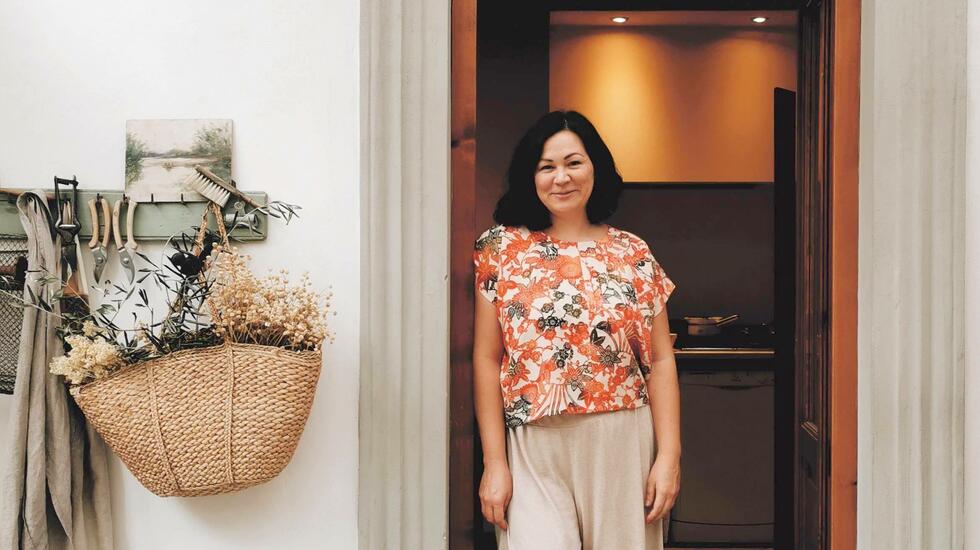
When
Emiko Davies visited her grandparents on holidays to Japan
as a child, it wasn’t ever-replenishing bowls of raman or
hand-moulded sushi made by a 40-years-in-the-making master that she
remembers. Instead, it was the home-cooked recipes lovingly
prepared by her obaachan (grandmother), the scents of which would
waft from behind the saloon-style doors guarding the entrance to
the matriarch’s kitchen.
Those quick, easy and nourishing family dinners are the
inspiration for Davies’ new cookbook, Gohan. Now based in Tuscany, the food writer has swerved the
typical associations of Japanese cuisine – izakaya dishes, sushi
and swish omakase menus – in favour of showcasing the simplicity of
everyday eating in the country. And while the book invites cooks to
recreate regional specialities in their own kitchens, Davies is
keen to show that, like the cuisine of her adopted home in Italy,
Japanese home cooking can be explored and enjoyed while visiting
the country, too. You just need to know where to look (or eat).
Here, Davies chats about the often-overlooked joys of Japanese
home cooking and shares her tips for tasting comforting tofu bowls,
simple bento and moreish mochi snacks when visiting the
country.
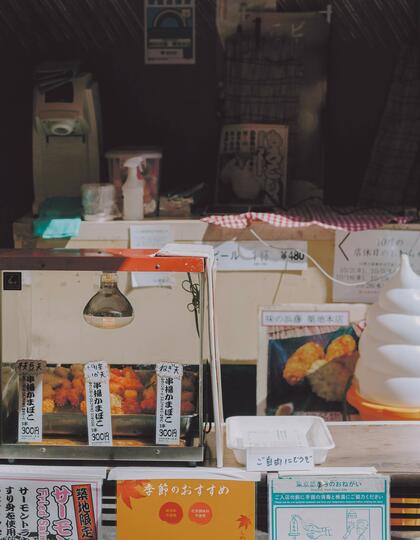
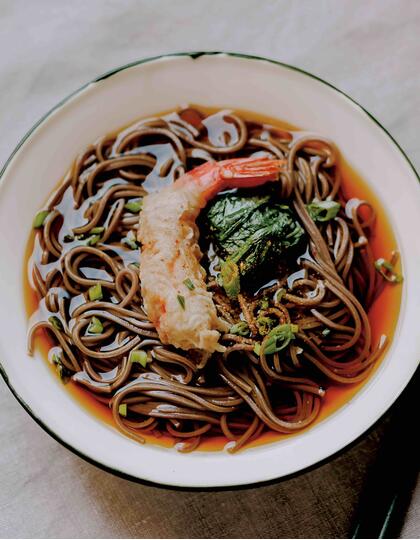
It started with a conversation I had with another cookbook
author, Tessa Kiros. She mentioned that she thought Japanese food
was something you don’t really attempt to cook at home. It’s often
seen as intimidating, and “cheffy”. My response was “but this is
the food I cook when I’m tired, and I don’t have a lot of time, and
I need something fast and comforting”. It made me realise that
usual experiences of Japanese food are had in a restaurant, and
that’s very different to what you would eat at home if you had a
Japanese mother or a grandmother, or a friend, cooking for you.
When you go to a restaurant, you eat sashimi made by a master
who has been doing that his whole life. Or you’ll go to a tonkatsu
restaurant and all they will do is tonkatsu, and there will be
someone in the kitchen who has been learning to cut cabbage for 30
years. With this book, I wanted people to see Japanese home cooking
as they do Italian home cooking: it’s quick and easy, and it’s
seasonal.
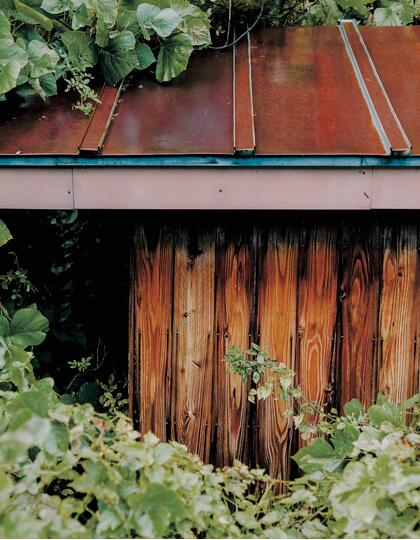
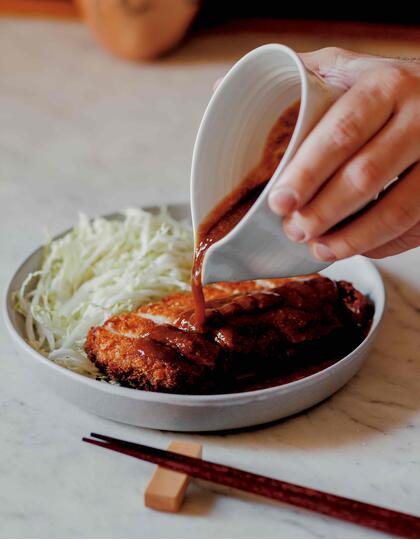
Yes, absolutely. Food brings people around the table. A lot of
the dishes in this book are what you’d make for a gathering to eat
together. For example, nobody makes sushi at home, but they do make
temaki. You have your bowl of rice, a platter with all the
ingredients on – slices of fish and cucumber, avocado – and
everyone sits around and builds their own temaki. It’s called hand
sushi because you cut the seaweed to the size of the palm of your
hand. It’s one of my favourite things to eat with my family.
In Japan, there are a lot of regional differences. Most of the
dishes in the book are from around Tokyo, because that’s where my
grandparents lived. But, like Italian food, there are regional
specialities that people don’t really know much about.
My grandparents are both from the south of Japan, and moved when
they were young. My grandfather is from Fukuoka in Kyushu, which is
known for its fishcakes.
I talk a little bit about curries in Gohan, too. It’s a great
example of Japanese home cooking that’s different everywhere you
go, and done differently in every house. Each part of Japan has a
different speciality of curry.
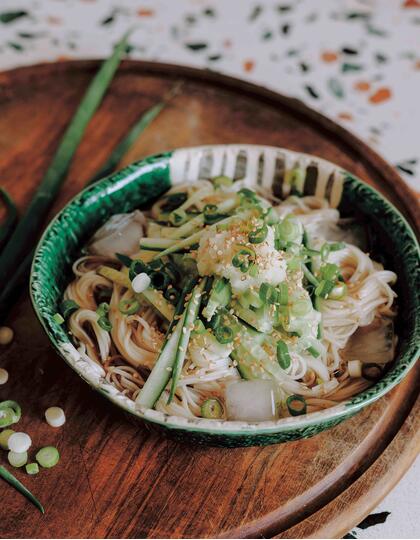
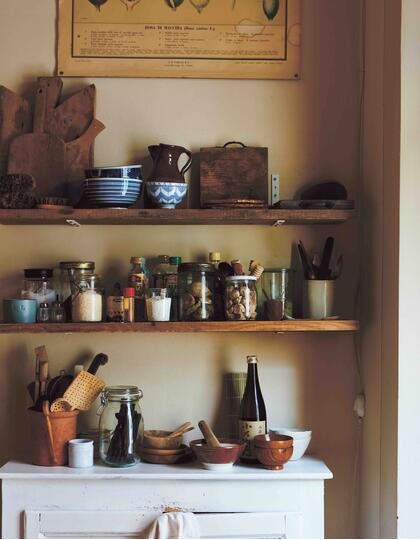
I spent some time in Nagano last year, visiting friends. It’s a
landlocked region in the mountains that is very cold and dry in
winter. Their speciality is freeze-dried food. They freeze-dry tofu
and daikon radish, and fishermen bring seaweed to the region in
winter to be freeze-dried and then used to make jelly. It’s only
two hours from Tokyo by train.
A town called Chino. The tourism board organises wonderful food
experiences with local grannies. You’ll be taken into the village
and shown where they plant perilla leaves and other ingredients.
You’ll see rice fields and daikon fields, and then you can try
classes in preparing home-cooked Japanese meals using the local
produce. I did a class in making freeze-dried tofu, which has an
incredible texture and can be added to soups. It was a wonderful
experience.
I picked all the recipes I really, really love and that I’m most
nostalgic for. These are the recipes that hold a lot of memories of
Japan. Some of those dishes are ones my grandmother would prepare,
but there are also a lot of things that we would eat when we were
out in Tokyo. We could reach the city by train in about 40 minutes,
and we’d spend the day in Mitsukoshi department store, or my
grandfather would take me out to a little restaurant to have a
fried prawn sandwich. I wanted to recreate the things you might try
on a trip to Japan.
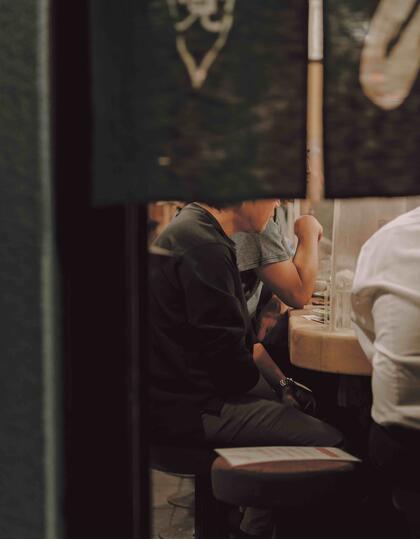
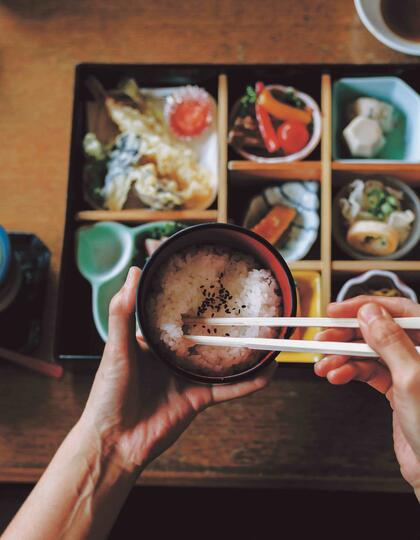
The closest – and easiest – thing you can do is have a Japanese
breakfast. A Japanese breakfast looks pretty much like a Japanese
lunch or dinner. It’s based on having some rice and soup, and three
or so other dishes. There’ll be lots of little vegetable dishes,
and probably some grilled fish, and pickles.
Otherwise, if you’re travelling in the countryside, a typical
ryokan may offer half-board dinners. They’ll bring all of the
dishes into your traditional room, serving a big tray full of these
little dishes that will give you a taste of some of the things that
are more like what you would have at someone’s home.
There are also some great lunch spots in Tokyo that do bento
lunch, which is a really affordable option. An unexpected place
that does bento lunch really well is Muji in
Ginza. They offer a set lunch bento, which is essentially a homely
Japanese meal.
Gohan: Everyday Japanese Cooking (Smith Street Books) is
available from uk.bookshop.org for £26.
Photography by Emiko Davies, Hana Davies and Yuki
Sugiura